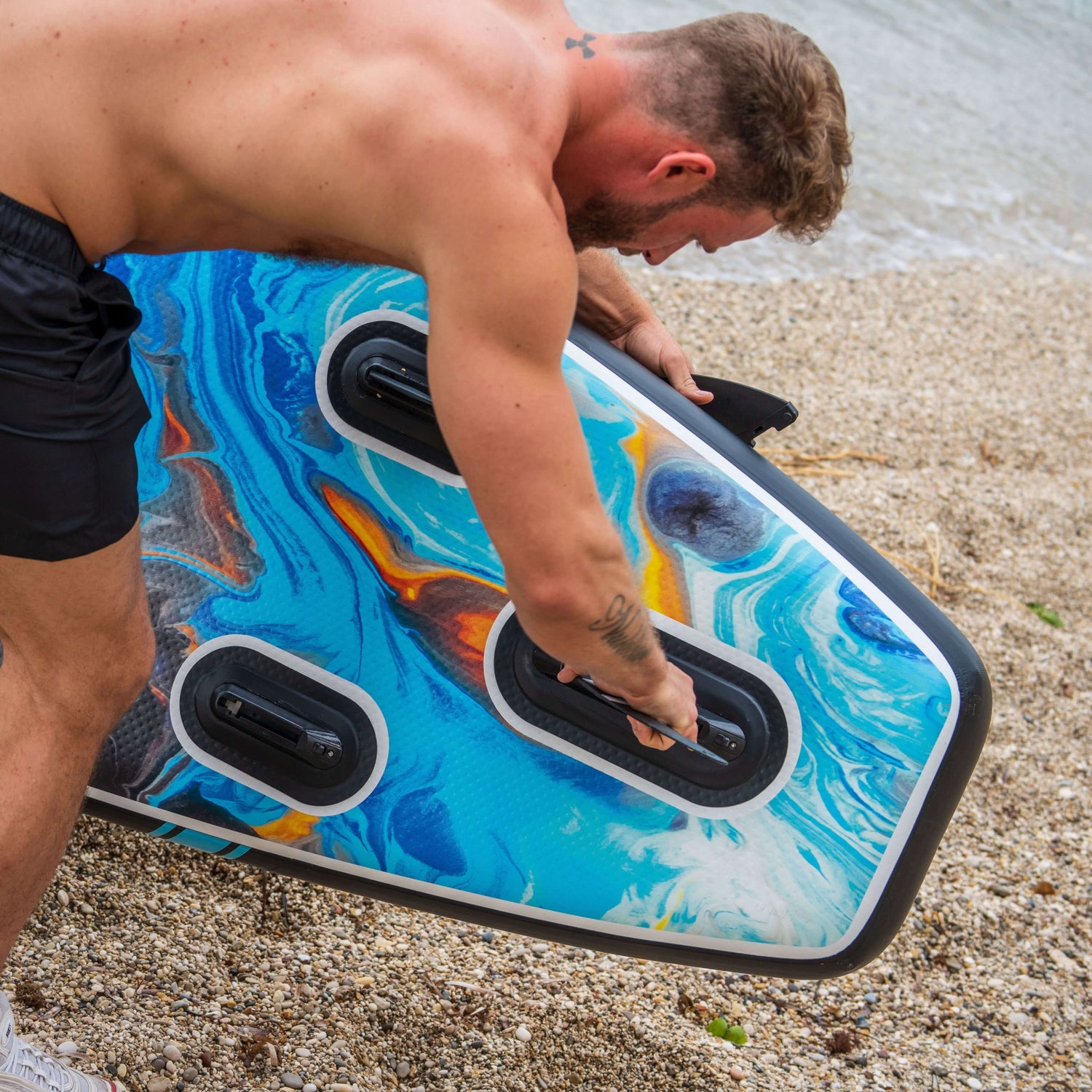Whether you’ve been navigating the tranquil waters of a serene lake or braving the choppy waves of the ocean, your paddle board has been your loyal companion through countless adventures. And as such, ensuring its proper storage during downtime is essential for maintaining its condition and performance. So, what’s the best way to store a paddle board? Let's take a look at some best practices so your board is ready and prepared for your next aquatic adventure. Let’s dive in!
The Importance of Improper Storage
So, why’s it important to store your paddle board correctly? It’s simple - incorrect storage can lead to a host of issues for your paddle board, including warping, discoloration, and physical damage. These kinds of issues not only diminish the aesthetic appeal of your board but can also significantly impact its performance and lifespan. Proper storage, therefore, is not just about tidiness; it's about preserving your investment and ensuring your board is always adventure-ready.
Don’t forget - if you’re looking for more tips on paddle board care, or you’re looking to explore more gear, feel free to explore our latest collection of inflatable paddle boards!
Choosing the Right Storage Location
The ideal storage location for your paddle board is somewhere cool, dry, and away from direct sunlight; extreme temperatures and humidity can adversely affect your board’s material, so selecting a spot that minimises exposure to these elements is key. Ideally, indoor storage is preferable, but if you must store your board outdoors, seek a shaded, protected area and consider using a weather-resistant cover for additional protection.
Indoor Storage Techniques
As we just mentioned, storing your paddle board indoors is the best way to shield it from the elements. Wall mounts or ceiling racks are excellent for saving space and can also turn your board into a striking piece of decor - you’ll simply want to ensure that the storage method you choose supports the board evenly to prevent pressure points that could lead to deformation.
Outdoor Storage Considerations
If indoor storage is not an option, outdoor storage requires careful planning. A protective cover is essential to guard against UV rays, rain, and debris. Moreover, you'll want to make sure to elevate your board off the ground and ensure it’s securely fastened to prevent wind damage. Always opt for a location that offers as much natural protection as possible.

Proper Cleaning and Maintenance Before Storage
A clean board is a happy board! Rinse your paddle board with fresh water after each use to remove salt, sand, and other residues, and allow it to dry completely before storage to prevent mould and mildew growth.
Disassembling and Securing Accessories
You’ll also want to remove all accessories, such as fins, leashes, and any attachable gear, to prevent them from bending or being lost. This is also an opportune time to inspect these items for damage and make necessary repairs or replacements, so you can be sure that everything’s in prime condition for your next outing.
Storage Accessories and Gear
If you want to take it to the next level, you could also consider investing in storage accessories to make the process more efficient. Specialised racks, stands, and covers designed for paddle boards can streamline storage and protect your board - these accessories not only keep your board safe but also help organise your gear, so prepping for your next adventure becomes quicker and easier.
Check out our Tidal Rave SUP Rucksack if you prefer to always have your SUP handy.
Final Checks Before Use
Before you hit the water again, perform a thorough inspection of your paddle board for any signs of damage or wear. Ensure all components are secure and functioning correctly. This preemptive check can prevent unexpected issues during use, ensuring a safe and enjoyable experience.
In conclusion, proper storage of your paddle board is crucial for preserving its condition and extending its lifespan. By following these guidelines, you can ensure that your board remains ready for whatever adventures await!
FAQs
Can I store my paddle board inflated?
Yes, you can store your paddle board inflated if space allows and if it's an inflatable model. However, it's essential to reduce the pressure slightly to avoid stress on the seams, especially in areas subject to temperature fluctuations. Ensure it's kept in a cool, dry place away from direct sunlight to prevent any damage, and check out our guide on inflating and deflating paddle boards for more insights.
How do I prevent my paddle board from yellowing?
To prevent your paddle board from yellowing, limit its exposure to direct sunlight when not in use. UV rays can cause the materials to discolour and degrade over time. Storing your board indoors or under a UV-protective cover when outdoors can significantly reduce the risk of yellowing.
Is it okay to hang my paddle board by the leash?
Hanging your paddle board by the leash isn’t recommended, as it can place undue stress on the leash attachment point and potentially deform the board over time. Instead, consider investing in a proper rack that supports the board evenly across its length.
Can I store my paddle board vertically?
Yes, - you’ll want to simply ensure the area you choose is free from heavy foot traffic to avoid accidental knocks or falls. You can also place a protective mat under the tail to prevent damage and lean the board against a wall in a manner that avoids pressure on the fins.
How often should I check on my stored paddle board?
It's a good practice to check on your stored paddle board periodically, especially if it's stored outdoors or in a place with temperature fluctuations. A monthly check can help you spot any issues early, such as potential moisture accumulation or damage from pests or rodents.
Can I leave my paddle board in my car?
Storing your paddle board in a car for extended periods isn’t advisable - the interior of a car can heat up quickly, especially in direct sunlight, leading to potential heat damage, warping, or increased pressure that can affect inflatable boards.





